Killer's Payoff Read online
“The 87th Precinct series [is] one of the great literary accomplishments of the last half-century.”
—Pete Hamill, Daily News (New York)
“It’s hard to think of anyone better at what he does. In fact, it’s impossible.”
—Robert B. Parker
Praise for the 87th Precinct Novels from America’s Unparalleled,
Award-Winning Master of Crime Fiction
ED McBAIN
MONEY, MONEY, MONEY
Edgar Award nominee!
“Crisp and fresh…savagely brutal…[with] unexpected and amusing twists.”
—Los Angeles Times
“McBain plays fair and square with the complications that arise from this clever setup. Over and over, he keeps telling us to keep an eye on the money, which slips through more hands than a third-grade bathroom pass.”
—The New York Times
“Tight plotting, crackling police work, and bizarre people…a witty tale of counterfeit money that grows before the reader’s eyes.”
—The Plain Dealer (Cleveland)
“Captivating stuff.”
—St. Petersburg Times (FL)
“An instant classic…. It’s McBain at his best. And there’s none better.”
—The Post and Courier (Charleston, SC)
“McBain’s Money is a sure bet…. [His] writing remains young, vigorous, sharp, and entertaining.”
—Publishers Weekly
“The complications flow so effortlessly and the tone is so irresistibly ebullient that you can relax in the hands of a master. Merry Christmas.”
—Kirkus Reviews
“Pure prose poetry…. It is writers such as McBain who bring the great American urban mythology to life.”
—The London Times
THE LAST DANCE
“The fiftieth novel of the 87th Precinct is one of the best, a melancholy, acerbic paean to life—and death—in the fictional big city of Isola…. This is McBain in classic form, displaying the writing wisdom gained over more than forty years of 87th Precinct novels to deliver a cop story that’s as strong and soulful as the urban heart of America he celebrates so well.”
—Publishers Weekly (starred review)
“Having stripped down and refined his language over the years to the point where it now conceals as much as it reveals, McBain forces us to think twice about every character we meet in The Last Dance, even those we thought we already knew.”
—The New York Times Book Review
“McBain remains simply at the top of his game…. The Last Dance [is] a great piece of writing.”
—Larry King, USA Today
Praise for
CANDYLAND
A Novel in Two Parts
by EVAN HUNTER and ED McBAIN
A People Magazine “Page-Turner of the Week”
“Hunter provides a compelling psychological portraiture…. McBain easily matches his achievement with an inspired police procedural, topped off with a completely unexpected and satisfying twist at the end.”
—People
“A tour de force….”
—Kirkus Reviews
“The plot is fabulous and the ending whapped me in the eyeballs.”
—Larry King, USA Today
“A tribute to the skills of this great storyteller…. It is fun to read, despite the grim nature of its subjects…. Candyland exhibits a smoothness, a professionalism, a gritty energy and wit.”
—The New York Times
“Superb…. A multifaceted, psychologically astute portrait of crime and punishment…. Each part of the novel works beautifully alone but also in tandem.”
—Publishers Weekly (starred review)
“Under any name, this man is a master of his craft.”
—Library Journal
Also by Evan Hunter
Novels
The Blackboard Jungle (1954) Second Ending (1956) Strangers When We Meet (1958) A Matter of Conviction (1959) Mothers and Daughters (1961) Buddwing (1964) The Paper Dragon (1966) A Horse’s Head (1967) Last Summer (1968) Sons (1969) Nobody Knew They Were There (1971) Every Little Crook and Nanny (1972) Come Winter (1973) Streets of Gold (1974) The Chisholms (1976) Love, Dad (1981) Far from the Sea (1983) Lizzie (1985) Criminal Conversation * (1994) Privileged Conversation (1996) Candyland * (2001) The Moment She Was Gone ** (2002)
Short Story Collections
Happy New Year, Herbie (1963) The Easter Man (1972)
Children’s Books
Find the Feathered Serpent (1952) The Remarkable Harry (1959) The Wonderful Button (1961) Me and Mr. Stenner (1976)
Screenplays
Strangers When We Meet (1959) The Birds (1962) Fuzz (1972) Walk Proud (1979)
Teleplays
The Chisholms (1979) The Legend of Walks Far Woman (1980) Dream West (1986)
*Available in paperback from Pocket Books
**Available in hardcover from Simon & Schuster
Novels by Ed McBain
The 87th Precinct Novels
Cop Hater * • The Mugger • The Pusher * (1956) The Con Man • Killer’s Choice (1957) Killer’s Payoff • Killer’s Wedge • Lady Killer (1958) Til Death • King’s Ransom (1959) Give the Boys a Great Big Hand • The Heckler • See Them Die (1960) Lady, Lady, I Did It! (1961) The Empty Hours • Like Love (1962) Ten Plus One (1963) Ax (1964) He Who Hesitates • Doll (1965) Eighty Million Eyes (1966) Fuzz (1968) Shotgun (1969) Jigsaw (1970) Hail, Hail, the Gang’s All Here (1971) Sadie When She Died • Let’s Hear It for the Deaf Man (1972) Hail to the Chief (1973) Bread (1974) Blood Relatives (1975) So Long As You Both Shall Live (1976) Long Time, No See (1977) Calypso (1979) Ghosts (1980) Heat (1981) Ice (1983) Lightning (1984) Eight Black Horses (1985) Poison • Tricks (1987) Lullaby * (1989) Vespers * (1990) Widows * (1991) Kiss (1992) Mischief (1993) And All Through the House (1994) Romance (1995) Nocturne (1997) The Big Bad City * (1999) The Last Dance * (2000) Money, Money, Money * (2001) Fat Ollie’s Book (2003)
The Matthew Hope Novels
Goldilocks (1978) Rumpelstiltskin (1981) Beauty & the Beast (1982) Jack & the Beanstalk (1984) Snow White & Rose Red (1985) Cinderella (1986) Puss in Boots (1987) The House That Jack Built (1988) Three Blind Mice (1990) Mary, Mary (1993) There Was a Little Girl (1994) Gladly the Cross-Eyed Bear (1996) The Last Best Hope (1998)
Other Novels
The Sentries (1965) Where There’s Smoke • Doors (1975) Guns (1976) Another Part of the City (1986) Downtown (1991) Driving Lessons (2000) Candyland * (2001)
This book is a work of fiction. Names, characters, places and incidents are products of the author’s imagination or are used fictitiously. Any resemblance to actual events or locales or persons, living or dead, is entirely coincidental.
POCKET BOOKS, a division of Simon & Schuster, Inc.
1230 Avenue of the Americas, New York, NY 10020
Copyright © 1958 by Ed McBain
Copyright renewed © 1986 by Evan Hunter
Introduction copyright © 1994 by Hui Corp.
All rights reserved, including the right to reproduce this book or portions thereof in any form whatsoever. For information address Pocket Books, 1230 Avenue of the Americas, New York, NY 10020
ISBN: 0-7434-7655-7
POCKET and colophon are registered trademarks of Simon & Schuster, Inc.
Visit us on the World Wide Web:
http://www.SimonSays.com
This is for Gerry Ash
And for Ingram (in memory)
The City in these pages is imaginary,
The people, the places are all fictitious. Only the police routine is based on established investigatory technique.
Introduction
Are we there yet?
Apparently not.
Ever the slave to
the whims of cruel and unusual publishers, I am reluctantly continuing this seemingly incessant string of introductions, each of which is threatening to become as long as the 87th Precinct series itself. How is a mere writer supposed to remember the details of how a novel took shape in the year 1957, when Killer’s Payoff was being written?
I had my instructions.
That much I remember clearly.
Phase out Steve Carella. Carella is not a hero, he is a married man. Instead, give us a handsome hero with whom men can identify and with whom women can fall in love.
This is what I’d been told by the Pocket Books executive whom I prefer calling Ralph lest he turn his goons on me yet another time. Following the gentle persuasion that took place in the offices at 630 Fifth Avenue, I introduced the handsome new hero, Cotton Hawes, in a book titled Killer’s Choice. His debut caused no noticeable critical or popular acclaim. This did not lessen Ralph’s conviction that the series needed the shot-in-the-arm only a character of Hawes’s size and dimension could provide. In fact, and toward that end, Ralph had already concocted a slew of titles with the name “Cotton” in them, hoping to ensnare unsuspecting readers through the use of so-called Instant Newsstand Recognition.
You must remember that none of these books had as yet been published in hardcover. They were all paperback originals, and they sold for a mere twenty-five cents each—about a third of what a hit off a crack pipe will cost you at the time of this writing. In fact, if crack had been around back then, I’m sure Ralph would have suggested Cotton and Crack as one of the new titles in the new approach. As it was, he’d come up instead with such scintillating gems as Cotton and Steel, Cotton and Silk, Cotton and Smoke, and Cotton and God Knows What Else.
Back then, titles were routinely changed by publishers as a matter of course, with little regard for the author’s feelings or the intent of the book. I fought for Killer’s Payoff (which in itself wasn’t such a terrific title) because I’d already written Killer’s Choice, introducing Hawes, and I felt the next novel should echo it somewhat. Besides, I tend to think in terms of three—perhaps because Conan Doyle wrote The Sign of the Four, or perhaps, gee, just maybe because the first Pocket Books contract was for three books, and the second was for another three. Killer’s Payoff was to be the last book in that second contract. After that, Pocket could renew again or not, as they saw fit. I had the feeling that if Hawes didn’t work out as the driving force behind the series, it was goodbye, Charlie.
Upon reflection, it’s interesting to note that the first four books in the series were titled after the sort of criminals a policeman might actually encounter: Cop Hater, The Mugger, The Pusher, and The Con Man. But with the introduction of Cotton Hawes, the titles became sort of…well, private-eye sounding, don’t you think? Killer’s Choice? And then Killer’s Payoff? And I already had the third Killer’s title in mind, which eventually became the book Killer’s Wedge. None of these were as dreadful as the Cotton and titles conjured by Ralph, but they nonetheless had a pulpy, private-eye sound to them, perhaps, gee, just maybe because they were introducing a pulpy, somewhat private-eye character. Let’s face it. Badge or not, Cotton Hawes acted like a private eye!
Well, I hadn’t hired on to do a private-eye series. The series I’d proposed—to reiterate for those of you who haven’t been religiously collecting these remarkable introductions—was to be a realistic look at a squad room of cops who, when put together, would form a conglomerate hero in a mythical city. This meant cops of any stripe or persuasion could come and go, kill and be killed, transfer out or transfer in, without hurting or diluting the overall concept. Ralph seemed to have forgotten the concept (though an innovative television “creator” remembered it only too clearly many years later). Back in 1957, however, I myself seemed in imminent danger of seriously compromising my own vision.
You have to understand that I still considered the Evan Hunter career my main career, even though the novel I’d published under my own name in 1956, the year Cop Hater was published, turned out to be what we call in the trade “a critical failure.” That is to say, all the reviewers loved Second Ending but we sold only two copies of it, one to my mother and the other to my beloved Aunt Fanny. By the time I sat down to write Killer’s Payoff, though, I’d already completed another Evan Hunter novel titled Strangers When We Meet, which sold to the movies before the ink was dry on it (we used to write with feather quills back then) and which went on to become an even bigger bestseller than The Blackboard Jungle, my previously filmed novel. What I’m saying is that I didn’t have to write these 87th Precinct novels, my livelihood did not depend upon them. But I was enjoying doing them and besides I had the feeling they could turn out to be pretty good stuff if I just didn’t listen too hard to anything Ralph had to say.
I decided that I’d give Hawes three books altogether. Killer’s Choice, already published. Killer’s Payoff, which I was starting to write. And Killer’s Wedge, for which I already had the title, but not an idea in my head. If he didn’t become the hero by then, he could be transferred out of the Eight-Seven as easily as he’d been transferred in. (There was still no contract for a third Hawes novel, by the way, but that might prove to be academic.) Meanwhile, I had this novel to write, and my work was cut out for me. All I had to do was move Cotton Hawes deeper into the spotlight at the center of the stage, simultaneously make certain he behaved at least somewhat like a cop, and resist every effort to turn him into a goddamn private eye.
And so to bed.
ED MCBAIN
Norwalk, Connecticut
July 1993
1.
IT COULD HAVE been 1937.
It might have looked like this on a night in late June, the sidewalks washed with a light drizzle, the asphalt glistening slickly, blackly, in the splash of red and green neons. Despite the drizzle, there would be a balmy touch to the air, the fragrant smell of June, the delicate aroma of bursting greenery. And the perfume of growing things would mingle with the perfume of passing women, mingle with the perfume of people and machines, mingle with the ever-present smell of the city at night.
The clothes would have looked different, the women’s skirts a little shorter, the men’s coats sporting small black-velvet collars, perhaps. The automobiles would have been square and black. The shop windows would have carried the blue eagle of the National Recovery Act. There would have been small differences, but a city does not really change much over the years, because a city is only a collection of people and people are timeless. And the way the automobile came around the corner, it could have been 1937.
The man walking on the sidewalk didn’t even look up when the sedan squealed around the corner. He was city-born and city-bred, and the sound of shrieking tires was not an alien sound to him. He walked with nonchalant arrogance, this man, dressed in expensive good taste. He walked with the sure knowledge that all was right with the world, the certainty that he was master of all he surveyed. The automobile squealed around the corner and headed directly for the curb. It pulled up about ten feet ahead of the walking man. The windows on the side facing the curb were open. The engine idled.
The muzzle of a rifle appeared at one of the windows. The man walking broke his stride for just an instant. The person about to fire the rifle was looking through a telescopic sight down the length of the barrel. The distance between the muzzle’s end and the walking man was no more than eight feet. There was a sudden blurring flash of yellow, and then a shockingly loud explosion. The man’s face erupted in flying fragments; the rifle was pulled back from the window. There was a moment, and then the car gunned away from the curb, tires burning rubber, shrieking into the night. The man on the sidewalk lay bleeding profusely, and the drizzle softly covered him like a shroud.
It could have been 1937.
But it wasn’t.
A PAIR OF GREEN GLOBES straddled the entrance doorway to the precinct. For the benefit of those who might have missed one or another of the globes, the numerals 87 were lettered onto
both in black paint. Seven gray stone steps led from the sidewalk to the entrance doorway. Just inside the doorway, the desk sergeant sat behind the high desk, looking like a defrocked magistrate. A sign on the desk warned all visitors that they must stop there before proceeding further. Just beyond the desk and opposite it, a rectangle of wood that had been shaped into a pointing hand and then painted white announced, DETECTIVE DIVISION. The pointing hand indicated a double flight of metal stairs that led to the second floor of the precinct building. The locker room was at one end of the corridor on the second floor. The detective squadroom was at the other end, separated from the corridor by a slatted rail divider. Between the locker room and the squadroom, there were two benches, the clerical office, the men’s lavatory, and a room marked INTERROGATION.
The squadroom behind the slatted rail divider was sometimes called the “Bull Pen” by the uniformed cops of the precinct. The title was delivered with affectionate envy, for it was here that the detectives, the élite, the bulls of the 87th, conducted their business.
On the morning of June twenty-seventh, Detective Bert Kling’s business was with a man named Mario Torr.
Torr had come to the station house of his own volition, had mounted the seven gray stone steps, stopped at the desk as requested, asked for the detectives, and been directed to the pointing hand opposite the desk. He had climbed to the second floor of the building, entered the dimly lighted corridor there, hesitated a moment, and then walked to the end of the corridor, where he’d waited outside the railing until one of the detectives had asked him what he wanted. Torr was dressed in ready-to-wear mediocrity. There are men who can make a thirty-five-dollar suit look as if it were handtailored. Torr was not one of these men. He wore his brown sharkskin as if it belonged to his fatter brother. His tie had been picked up in a three-for-a-dollar tie shop along The Stem. His white shirt had been laundered too often. The cuffs and collar were frayed.

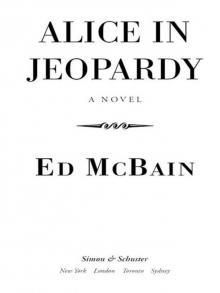 Alice in Jeopardy: A Novel
Alice in Jeopardy: A Novel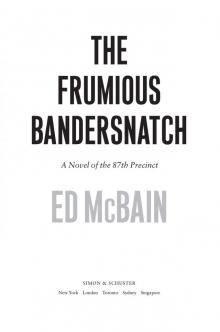 The Frumious Bandersnatch
The Frumious Bandersnatch The McBain Brief
The McBain Brief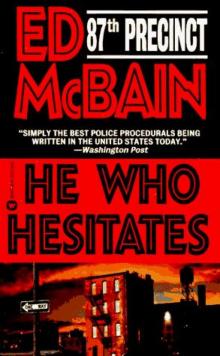 He Who Hesitates
He Who Hesitates Mischief
Mischief Fat Ollie's Book: A Novel of the 87th Precinct
Fat Ollie's Book: A Novel of the 87th Precinct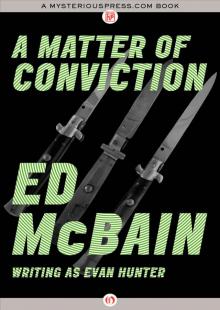 A Matter of Conviction
A Matter of Conviction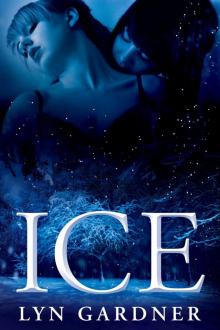 Ice
Ice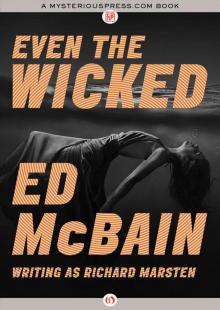 Even the Wicked
Even the Wicked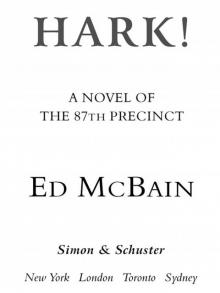 Hark!
Hark!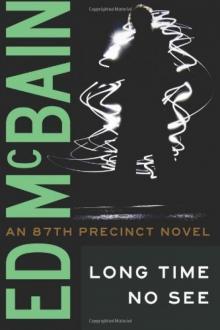 Long Time No See
Long Time No See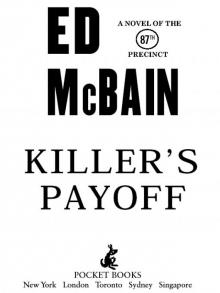 Killer's Payoff
Killer's Payoff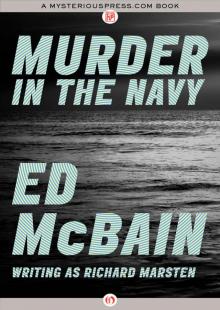 Murder in the Navy
Murder in the Navy A Horse’s Head
A Horse’s Head So Nude, So Dead
So Nude, So Dead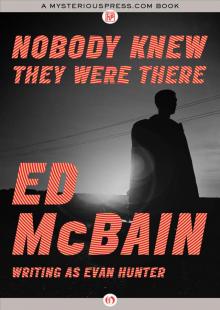 Nobody Knew They Were There
Nobody Knew They Were There Alice in Jeopardy
Alice in Jeopardy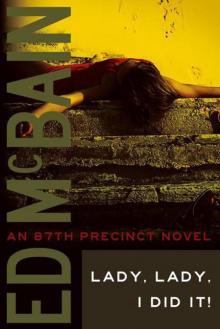 87P14-Lady, Lady, I Did It!
87P14-Lady, Lady, I Did It! Fuzz
Fuzz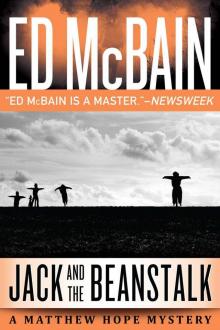 Jack and the Beanstalk (Matthew Hope)
Jack and the Beanstalk (Matthew Hope)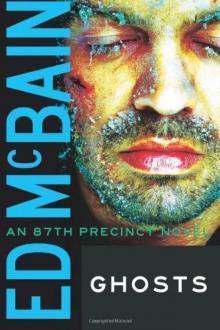 Ghosts
Ghosts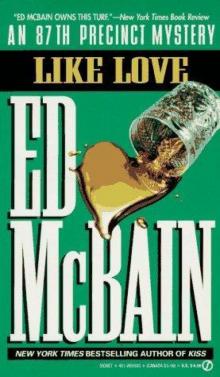 Like Love
Like Love Cut Me In (Hard Case Crime)
Cut Me In (Hard Case Crime)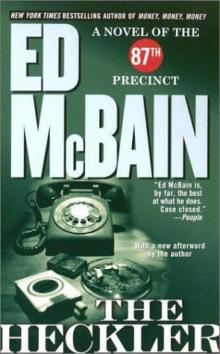 The Heckler
The Heckler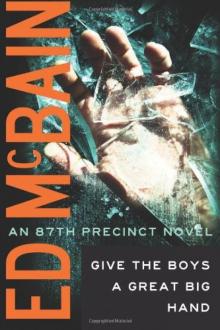 Give the Boys a Great Big Hand
Give the Boys a Great Big Hand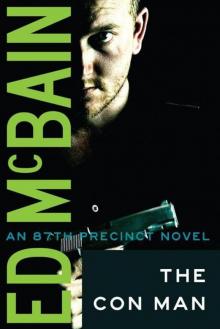 The Con Man
The Con Man Masters of Noir: Volume One
Masters of Noir: Volume One Money, Money, Money
Money, Money, Money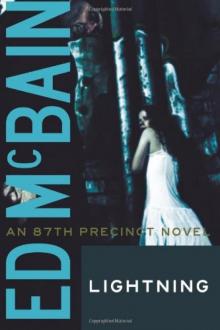 Lightning
Lightning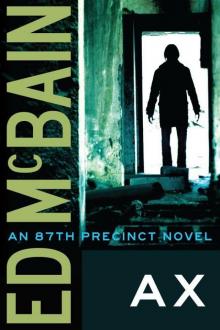 Ax
Ax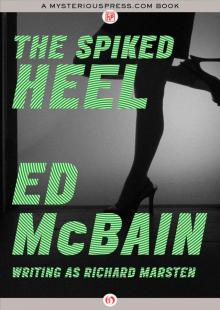 The Spiked Heel
The Spiked Heel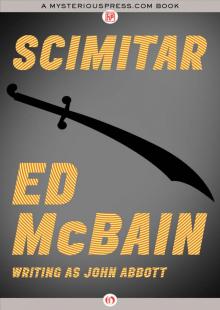 Scimitar
Scimitar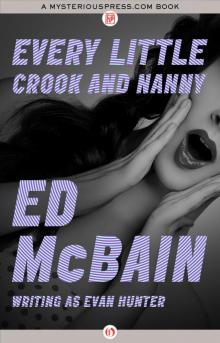 Every Little Crook and Nanny
Every Little Crook and Nanny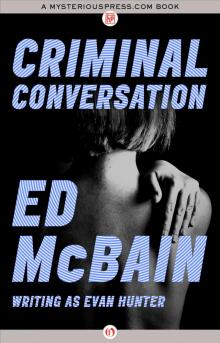 Criminal Conversation
Criminal Conversation Doors
Doors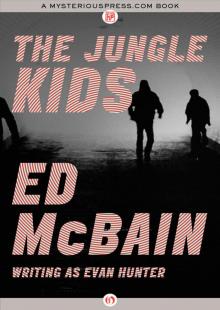 The Jungle Kids
The Jungle Kids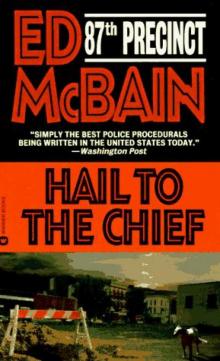 Hail to the Chief
Hail to the Chief Pusher
Pusher Killer's Choice
Killer's Choice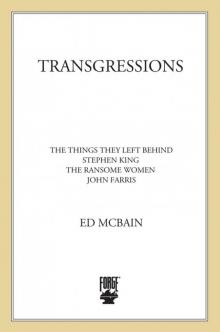 Transgressions Volume 2
Transgressions Volume 2 King's Ransom
King's Ransom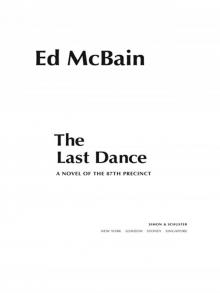 The Last Dance
The Last Dance Fiddlers
Fiddlers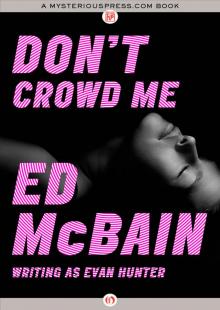 Don’t Crowd Me
Don’t Crowd Me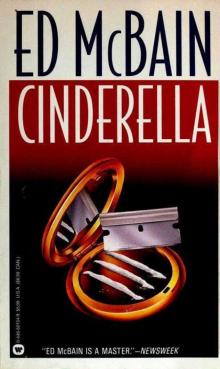 Cinderella
Cinderella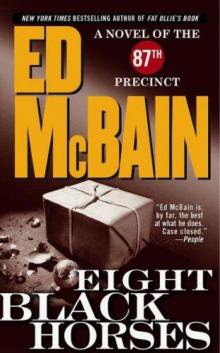 Eight Black Horses
Eight Black Horses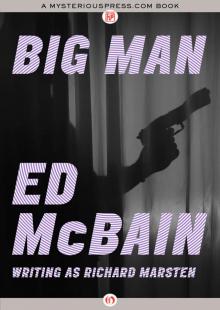 Big Man
Big Man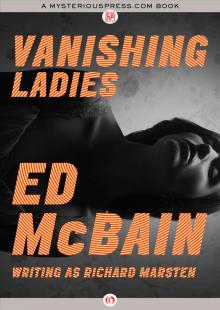 Vanishing Ladies
Vanishing Ladies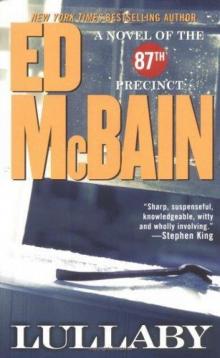 Lullaby
Lullaby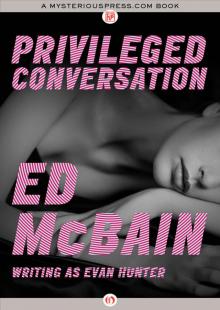 Privileged Conversation
Privileged Conversation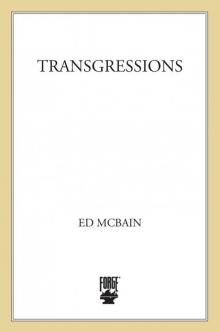 Transgressions, Volume 4
Transgressions, Volume 4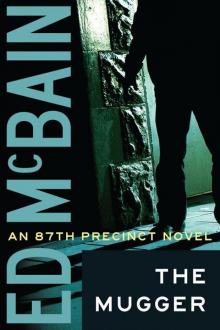 The Mugger
The Mugger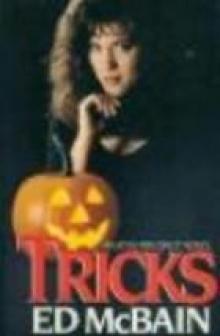 Tricks
Tricks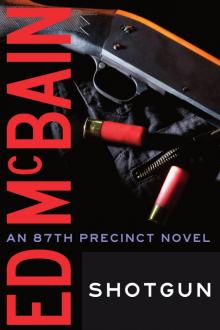 Shotgun (87th Precinct)
Shotgun (87th Precinct) Hail, Hail, the Gang's All Here!
Hail, Hail, the Gang's All Here!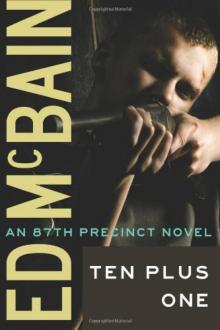 Ten Plus One
Ten Plus One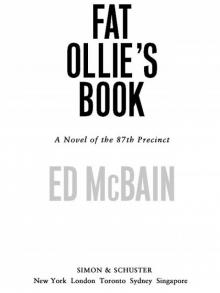 Fat Ollie's Book
Fat Ollie's Book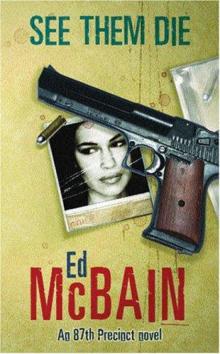 See Them Die
See Them Die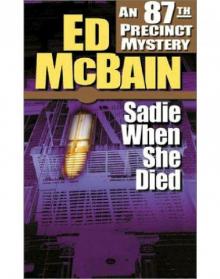 Sadie When She Died
Sadie When She Died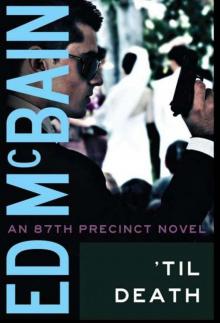 Til Death
Til Death Transgressions Vol. 3: Merely Hate/Walking the Line/Walking Around Money
Transgressions Vol. 3: Merely Hate/Walking the Line/Walking Around Money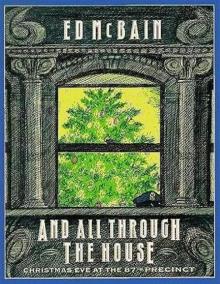 And All Through the House
And All Through the House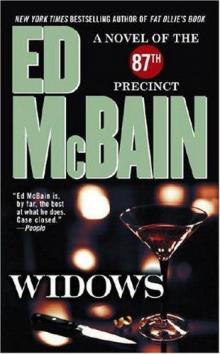 Widows
Widows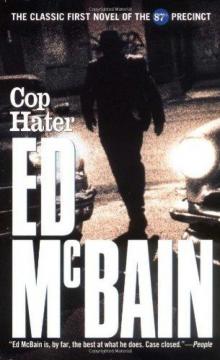 Cop Hater
Cop Hater Transgressions
Transgressions